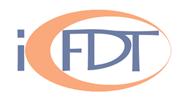Speaker
Prof.
Alexandre Semerok
(CEA Saclay)
Description
Tritium retention on plasma facing components (PFCs) of tokamak vacuum chamber is seen as a serious problem for a secure operation of modern nuclear fusion installations. Tritium surface cartography with tritium overall content determination is required for consecutive detritiation of PFCs. To achieve this goal, one may apply the spectroscopic analysis of the plasma produced by laser ablation of the PFCs (laser-induced breakdown spectroscopy, known as LIBS), which is seen as a promising technique.
The feasibility of in-situ LIBS remote measurements (5-10 meters from target) under a reduced pressure with the graphite PFCs from the European tokamaks (TORE SUPRA, CEA Cadarache, France and TEXTOR, Julich, Germany) has been extensively studied in laboratory using Q-switched nanosecond Nd-YAG lasers within the frames of the ITER project and EFDA programs[1-3]. The in-depth spectral line emission profiles of hydrogen, carbon, and some trace elements (B, Ca, Cr, Fe, K, Li, Na, Ni, Si) were obtained.
LIBS method was in-situ tested on the Joint European Torus (JET) in the UK with the EDGE LIDAR Laser System (Ruby laser, 3 Joules, 690 nm wavelength, 300 ps pulse duration, intensity up to 70 GW/cm2). These LIBS tests were undertaken in order to analyse a JET tile where eroded PFCs material was deposited on top of a tungsten stripe. Several analytical spectral lines of the plasma were observed in 400-600 nm spectral range with the optimised LIBS and detection system (improved optical collection system, adapted spectrometer, ICCD-detector). During the first laser pulses, the spectral lines of H, CII, CrI, and BeII are identified. Then, with the increase of the number of laser shots applied on the same divertor surface, the spectral line intensity of hydrogen decreased with the appearance of tungsten (WI) spectral lines, while those of the impurities (Cr, Be) were decreasing somewhat slower. The LIBS in-depth cartography was in agreement with the surface properties of the analysed tile. Thus, the LIBS in-situ proof of principle has been achieved[4].
In this presentation, after recalling some nanosecond LIBS results and pointing some limitations of this method, we will present several major improvements of the technique needed to measure accurately in-depth in-situ tritium concentration. Especially, LIBS measurements with femtosecond double pulses [5] in the tokamak environment with hydrogen isotopes resolution will be described and discussed.
____________________________________
[1] A. Semerok, J.-M. Weulersse, P. Fichet, Evaluation of Laser Ablation Optical Emission Spectroscopy Method for Graphite co-deposited Layer Characterisation, CEA report NT DPC/SCP 05-124-A, February 2005, 77 pages.
[2] F. Le Guern, F. Brygo, P. Fichet, E. Gauthier, C. Hubert, C. Lascoutuna, D. Menut, S. Mousset, A. Semerok, M. Tabarant, J.M. Weulersse, Co-deposited layer characterisation and removal control by optical emission spectroscopy coupled to nanosecond laser ablation, Fusion Engineering and Design 81 (2006) 1503–1509.
[3] A. Semerok, J-B. Sirven, D. Farcage, J-M. Weulersse, P-Y. Thro, Ch. Grisolia, J. Hermann, L. Mercadier, D. Borivent, E. Mothe, Laser-Induced Breakdown Spectroscopy for deposited layer characterisation, CEA report NT DPC/SCP 09-309-A, May 2009, 83 pages.
[4] J-M. Weulersse, D. L’Hermite, J-L. Lacour, F. Le Guern, G. Cheymol, P-Y. Thro, A. Semerok, Ch. Grisolia, M. Kempenaars, M. Stamp, N. Bekris, In situ Laser Breakdown Spectroscopy of JET Deposited Layers, CEA report NT DPC/SCP 08-293-A, December 2008, 72 pages.
[5] A. Semerok, C. Dutouquet, Ultrashort double pulse laser ablation of metals, Thin Solid Films 453 –454 (2004) 501–505.
Primary author
Prof.
Alexandre Semerok
(CEA Saclay)
Co-author
Dr
Christian Grisolia
(CEA cadarache)

